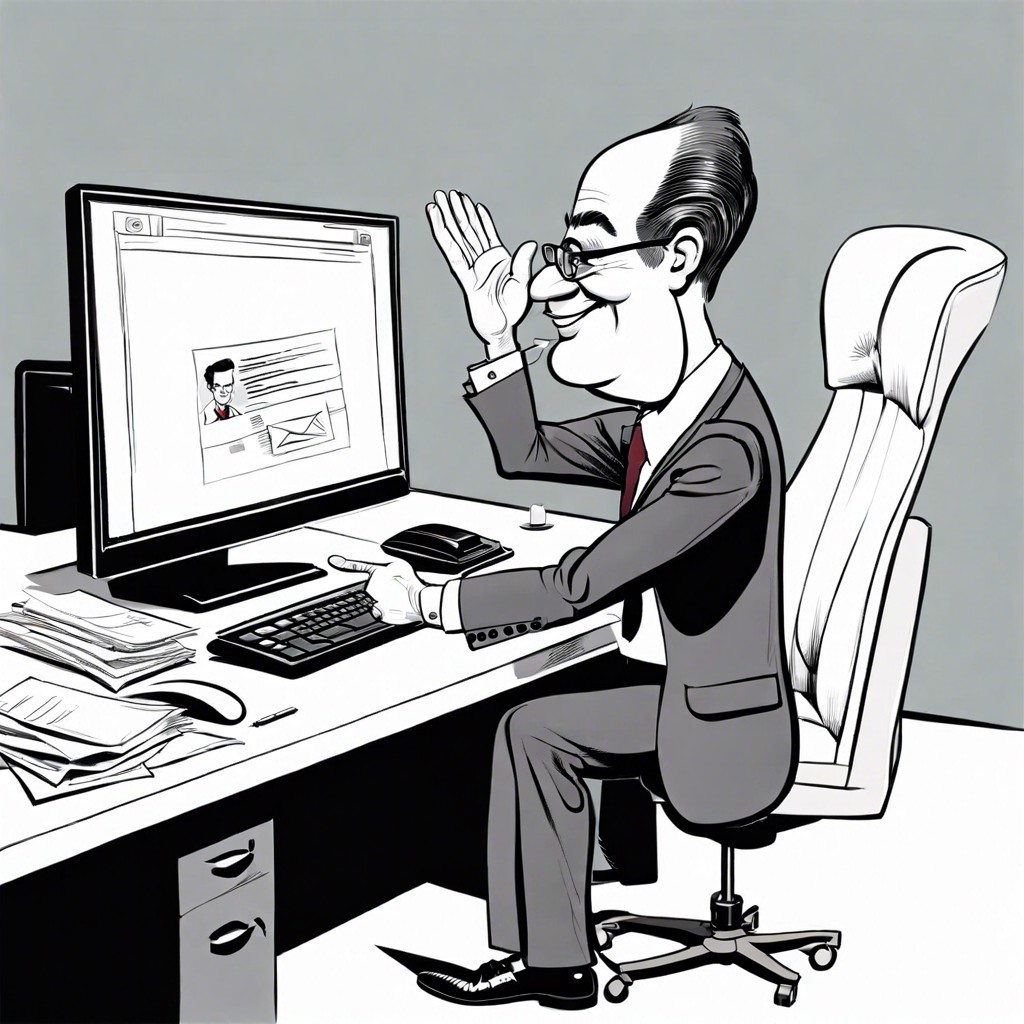Discover practical and effective responses to escalation emails that can help you navigate tricky professional situations with ease.
Feeling daunted by that escalating email sitting in your inbox? Don’t sweat it! You’ve just stumbled upon the ultimate guide to mastering the art of escalation responses. From acknowledging the issue with empathy to laying out actionable solutions, we’ve got your back. Dive in and walk away with tips that promise to transform even the most explosive situation into a triumphant resolution. Sound good? Let’s get cracking!
Key takeaways:
- Acknowledge receipt promptly: Swiftly calm the storm. * Show empathy: Validate feelings, offer solutions. * Provide clear explanation: Break down issues simply. * Offer actionable steps: Collaborative problem-solving with timelines. * Set realistic expectations: Honest, professional, and upfront.
Acknowledge Receipt Promptly

Nobody likes shouting into the void, especially in emails. When someone escalates an issue, they’re usually on edge. Calm that storm instantly by replying swiftly.
Imagine waiting for an answer is like watching paint dry. Hideous, right? Reduce that agony with a prompt response. Your quick acknowledgment shows you’re alert and on their side.
Be concise and polite. Acknowledge their concern without diving into the nitty-gritty, like this: “Thanks for bringing this to my attention. I’m looking into it and will get back to you shortly.”
Your goal? Reassure the sender that their email didn’t fall into an abyss. Reassurance can sometimes feel like a warm hug over digital waves. Quick, clear responses make a big difference.
Show Empathy and Understanding
Isn’t it just the worst when someone’s upset? When diving into their complaint, visualize yourself wearing their shoes. Uncomfortably tight or excessively loose, those shoes sum up their predicament.
Recognize their frustration. “I understand how this issue must be affecting you.” Magic words, really. Validation soothes like a warm cup of cocoa on a winter day.
Sprinkle empathy throughout, but don’t overdo it like a clown with confetti. “I appreciate your patience” conveys, “I see you waiting there, and I get that it’s not fun.”
Offer a sprinkle of solution hope. A mix of “I’m here to help” and “We’ll get this sorted” walks a fine line between caring and efficiency. Balance is key.
Offer a Clear and Concise Explanation
Imagine you’re untangling a bunch of Christmas lights – you need to know where the knots are. Similarly, break down the issue into digestible bits. Here’s how:
First, pinpoint the core problem. Be exact, like a cat stalking a laser pointer.
Next, ditch the jargon. Speak human to human. Use words your grandma would understand.
Then, dish out context. Why did this happen? What’s the backstory?
Finally, keep it short. No one ever said, “I wish this email were longer!”
By offering a clear map from chaos to clarity, you make everything smoother, like butter on hot toast.
Provide Actionable Steps or Solutions
Offer practical steps to address the issue head-on. Start by outlining the immediate steps you or your team will take. Be as specific as possible to show commitment to resolving the problem.
Clear instructions on how the recipient can help resolve the issue can make the process collaborative. This could include providing additional information or performing simple tasks on their end.
Include timelines to give a sense of urgency and priority. “We’ll investigate the issue within 24 hours” sounds much better than “We will look into it.”
Mention who will be responsible for each step. Knowing who to contact if things go awry adds an extra layer of reassurance.
Finally, suggest preventive measures. If the email is about a recurring issue, propose long-term fixes to prevent future escalations.
Staying solution-oriented not only resolves the immediate problem but also builds trust and credibility.
Set Realistic Expectations and Timelines
Imagine you promised your friend you’d cook them dinner but knew you’d be an hour late. Awkward, right? Same logic applies here.
Being up-front about timelines saves headaches. Guess what? People actually prefer honesty over vague promises.
- Think about these:
- You can’t fix a spaceship overnight. If it’s going to take a week, say so.
- Break it down. If Phase 1 of your master plan takes 2 days, let them know.
- Buffer zone. Always add a little wiggle room. Just in case of alien abductions or coffee machine breakdowns.
The key? Keeping it real without sounding like a downer. Calm and professional, always.
Take Responsibility for Any Mistakes
Own up to the blunders like a true pro. Mistakes happen, but dodging blame is never the solution. Hold up your hand and admit where things went off course.
First, zero in on the specific misstep. Customers appreciate when you pinpoint the exact issue rather than blanket statements. Saying, “We missed the deadline on the project report” goes further than an evasive “Mistakes were made.”
Second, express regret plainly and simply. A good old-fashioned “I’m sorry” works wonders when paired with sincere acknowledgment of the inconvenience caused. No need for Shakespearean drama here.
Lastly, outline what changes you’re implementing to ensure it doesn’t happen again. This could be something like, “We’re updating our project management process to improve deadline tracking.” Simple measures, big impact.
By taking responsibility, you not only mend fences, but also build trust. Customers want to see that you care and can learn from your missteps.
Maintain a Calm and Professional Tone
When emotions are high, your email should be the zen garden in a thunderstorm. Keep your language neutral and avoid any aggressive or defensive tones. If you wouldn’t scream it at your grandmother, it probably belongs in the email.
- Simple tricks:
- Use “I” statements to own the situation, like “I understand your concern…”
- Steer clear of exclamation points – you’re not ordering a pizza.
- Consider neutral verbs; instead of “you failed,” try “there was an oversight.”
Throw in some polite openings and closings. “Dear” and “Sincerely” can do wonders. Think of them as the yoga poses of email etiquette.
Follow Up to Ensure Resolution
Now, what’s next? Follow-up! This is where you show you’re not a robot. Reach out after your proposed solution is in motion. Check if the problem is genuinely fixed or if a new one magically appeared overnight.
A quick email or a short call can work wonders. It says you care. Plus, you’ll get brownie points for being thorough.
Provide updates if the resolution is taking time. No news is never good news.
Leave the door open. Ask if there’s anything more you can help with, and mean it.
This makes you a hero, and your customer’s day a little brighter.
Escalate Further If Necessary
Sometimes, despite best efforts, a resolution may require further assistance. It’s not about passing the buck; it’s about finding the right expertise.
Reach out to a higher authority or specialized team. Ensure they have all the details to avoid playing a game of frustrating email ping-pong.
Clearly communicate the next steps to the recipient. They need to know who will contact them and when. No one likes suspense in customer service.
Keep track of these escalations to identify patterns. This helps in nipping recurring issues in the bud and making sure they don’t grow into monstrous dragons later.




